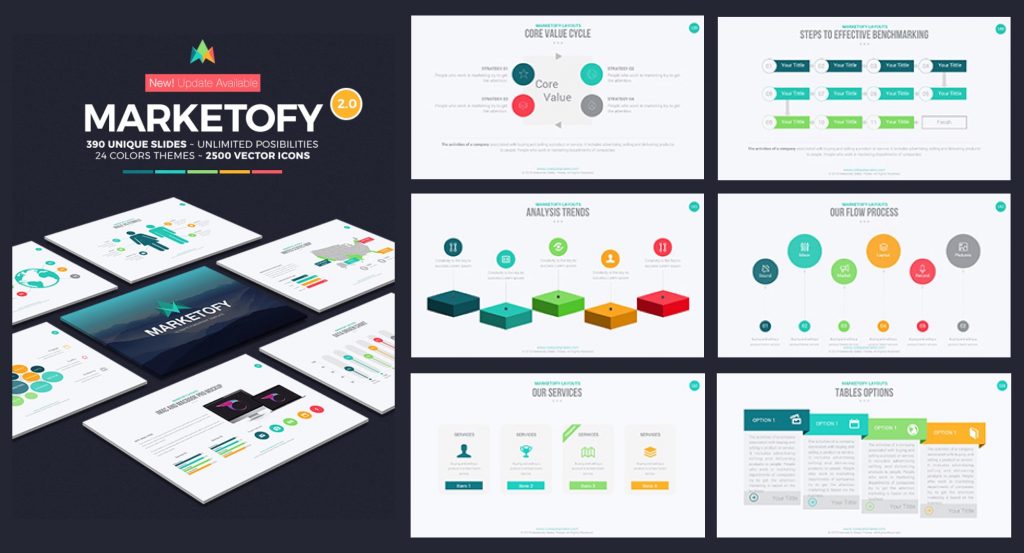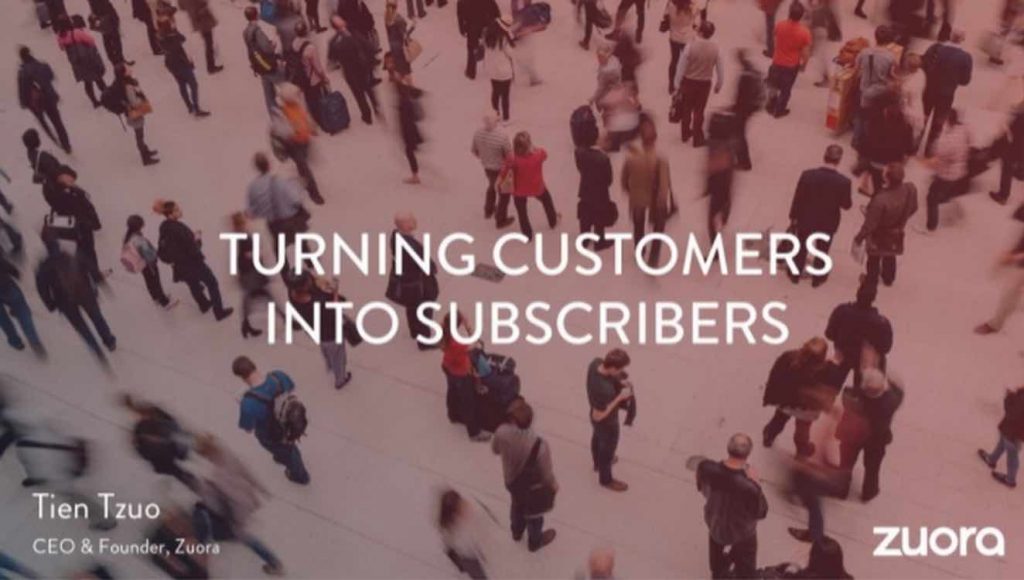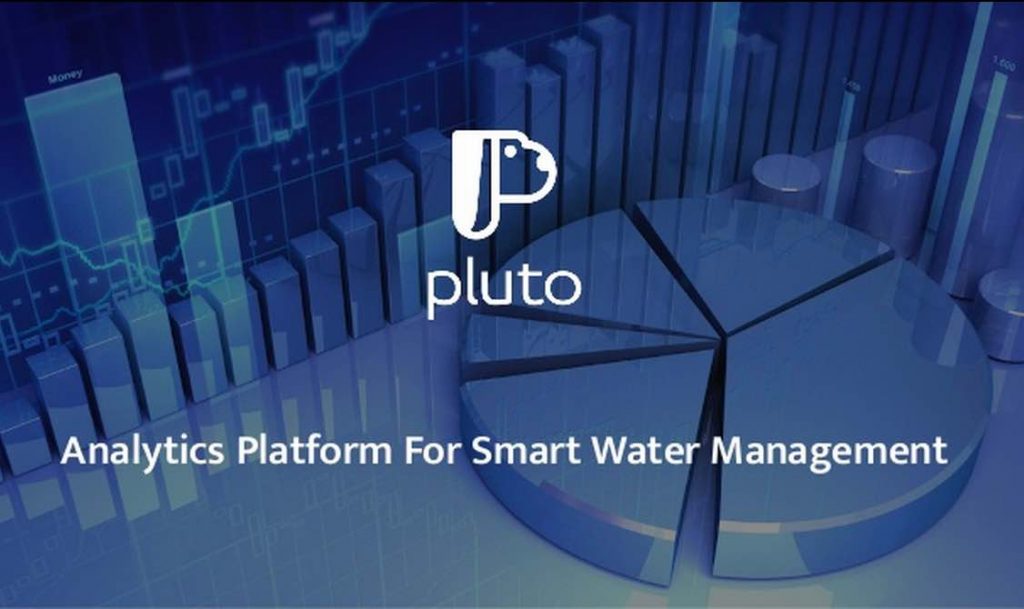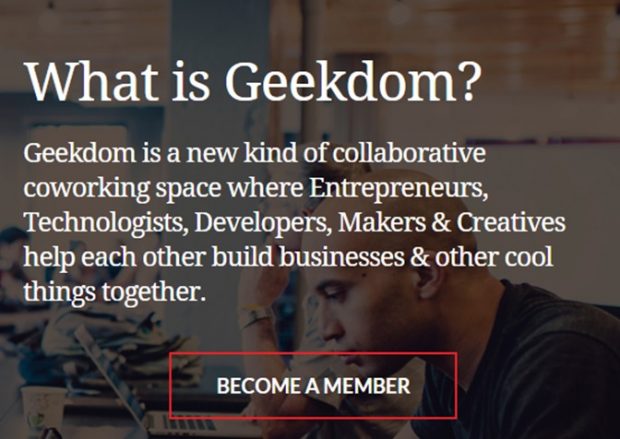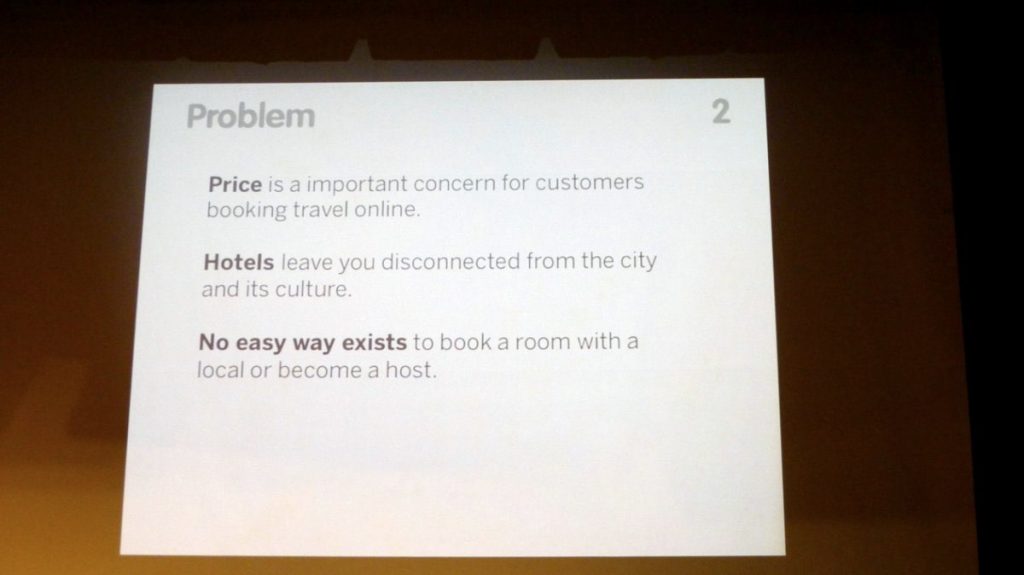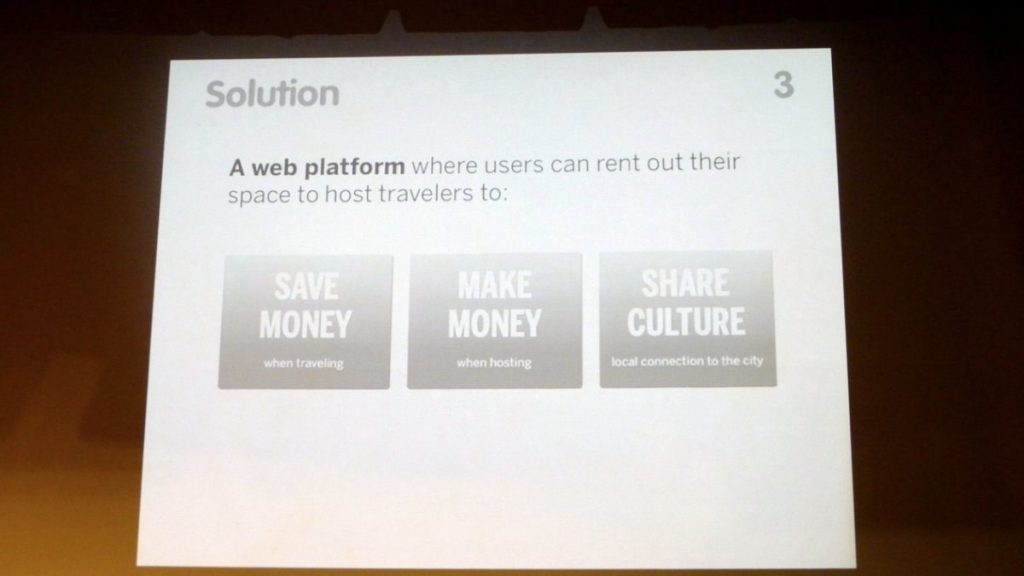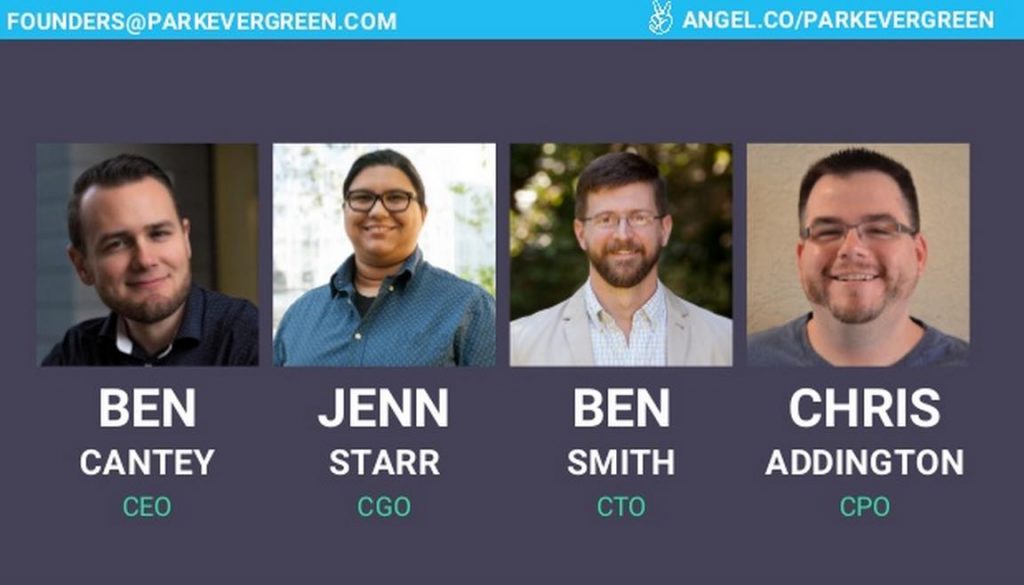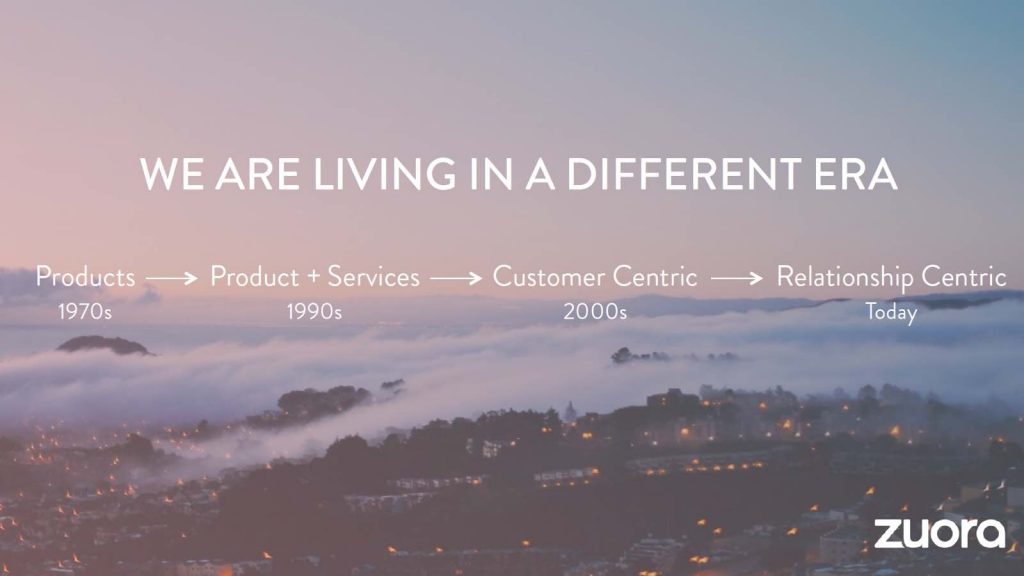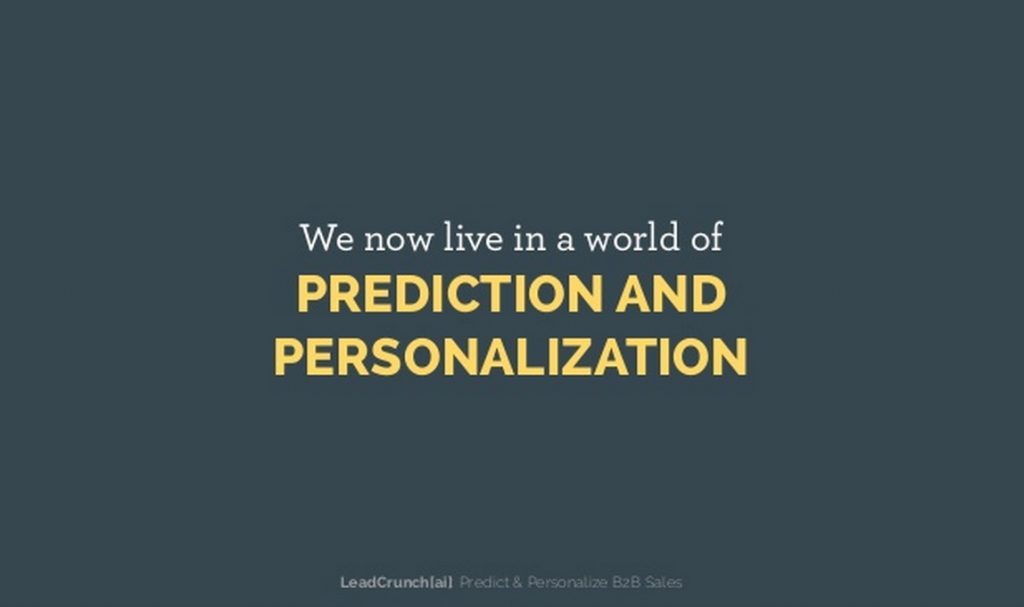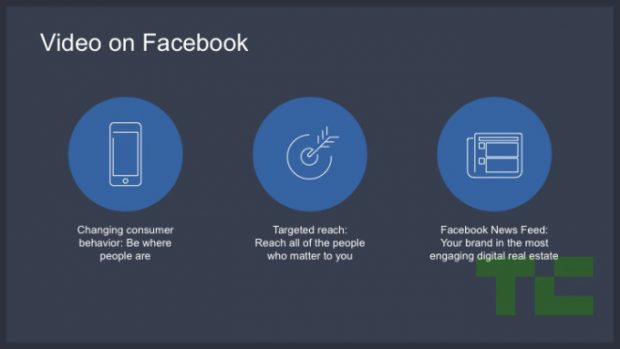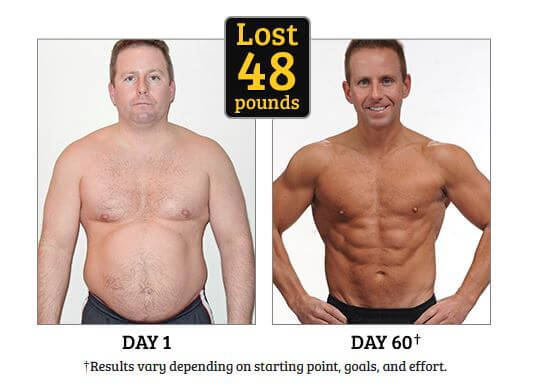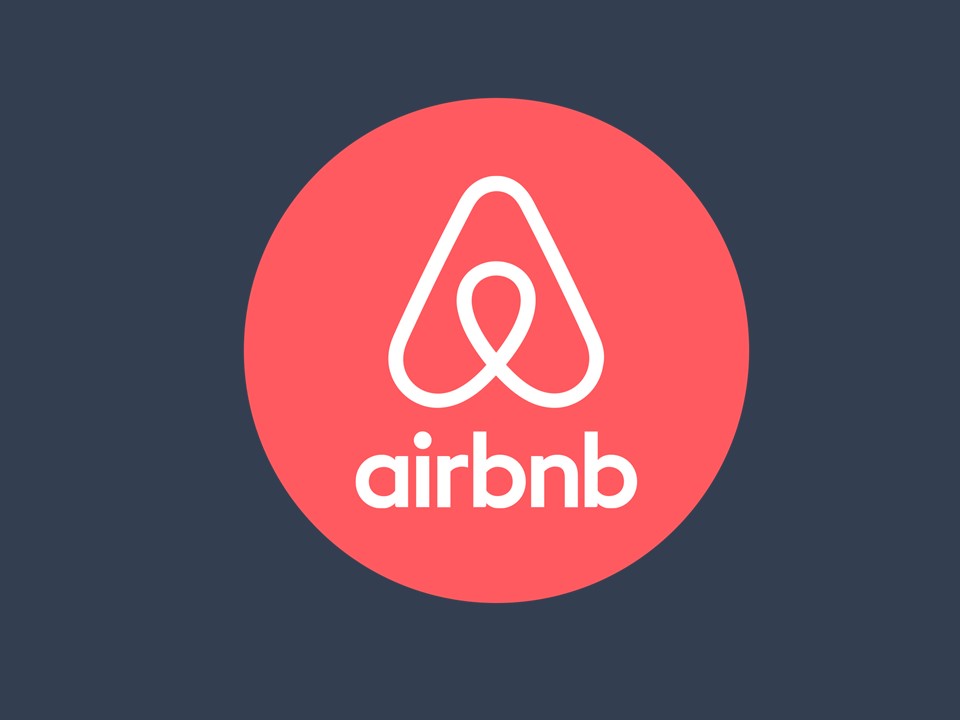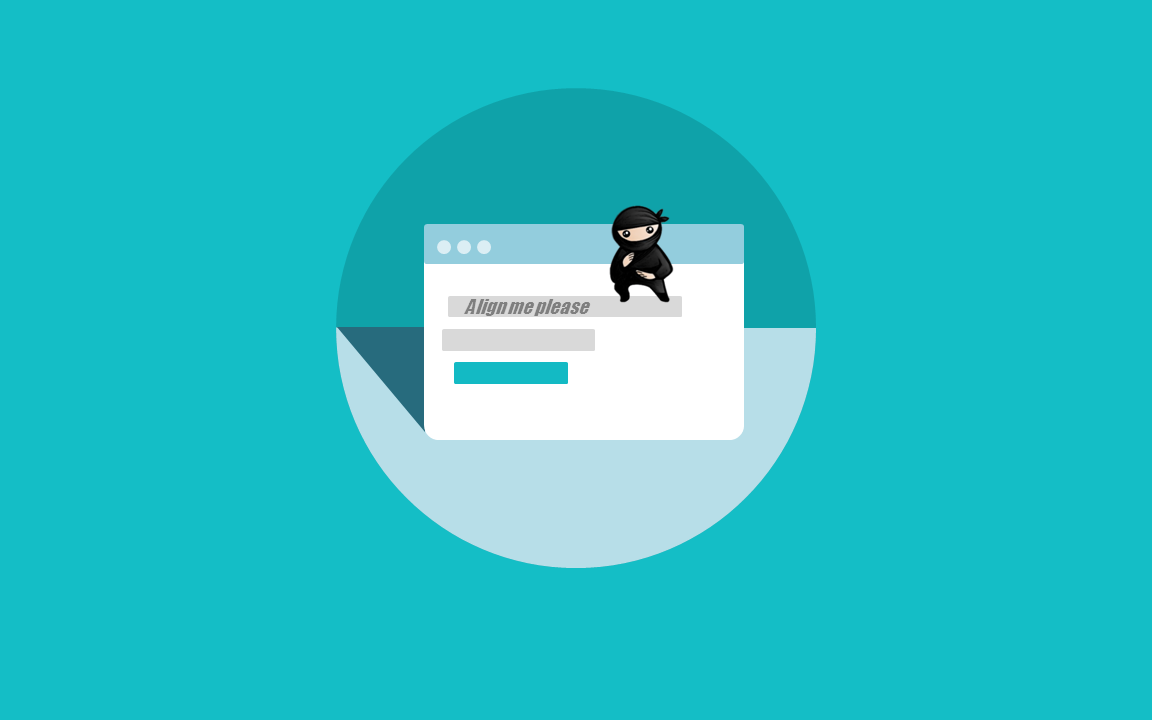This is the ultimate guide to making KILLER sales presentations.
So if you want more sales, you’re going to love the actionable tips, strategies and examples in this infographic and guide. Use them to prepare, structure and deliver solid sales presentations that bring you more business, step-by-step.
Let’s dive right in…
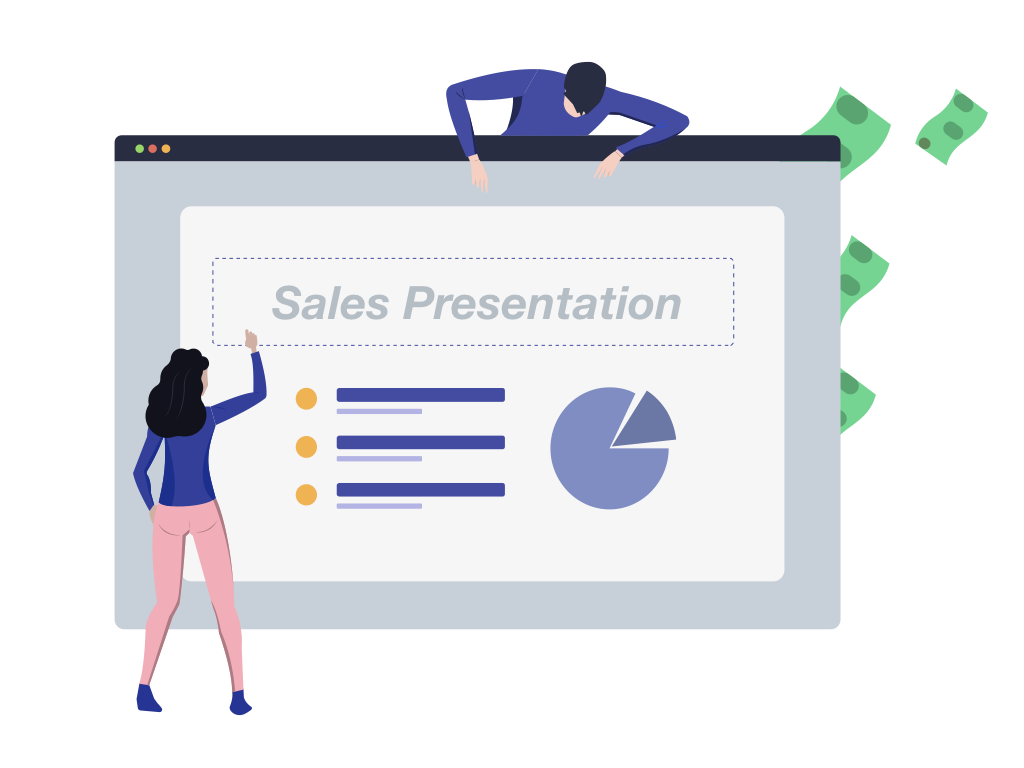
The Definitive Guide to Killer Sales Presentations
Here are the different sections that will be covered in the article:
😈 Part 0. The #1 Thing You Must Remember. If there’s one thing you should takeaway from this article, it’s this one. This is the mindset behind selling. Start here, it’ll only take you 20 seconds to read (Yes, I counted).
🤟 Part 1. The Anatomy of a Perfect Sales Presentation. In this infographic, you’ll learn the 7 ingredients you need to plan and structure the perfect sales presentation, from start to finish..
🤩 Part 2. How to Design High Impact Presentations. When you have no time, no budget and no special design talent.
🧐 Part 3. In-Deep Strategies. These are meeting-room tested techniques, action steps and (real world) examples you can swipe in your own presentations. I recommend you to start with the infographic, and then move on to this part.
🤔 Part 4. Q&A. How long should your sales deck be? How do you structure/prepare/design/end a presentation? Here are the most common questions business professionals are asking themselves, answered.
Hear me out:
This is the best sales advice you’ll hear today.
Nobody cares about you.
Your prospects don’t care about you.
They care about themselves. And they care about what you can do for them in order to solve their problems.
So here’s your takeaway:
A sales presentation is a persuasive demonstration to prospective buyers in order to make a sale.
And the key to making persuasive sales presentations is to demonstrate that your offering, either a product or a service, will help your prospects get more of what they want.
(I’ll have powerful techniques showing you how to do exactly that later in this post…)
This infographic will walk you through the 7 components of successful sales presentations. I advise you to read the infographic first, and then move on to the detailed strategies later in this guide.
 Part 2
Part 2
The Anatomy of A Perfect Sales Presentation
Easy-to-edit, designer-made templates allow non-designers to create beautiful, professional-looking presentations.
Top performers know that presentations can have a huge impact on their business. Because the truth is, when you start deliver top-tier business materials, you’re able to:
- Present clean slides that grab – and keep – people’s attention (adios text-heavy, 90’s clipart slides that put everyone to sleep).
- Confidently expressing ideas, concepts and messages with visual elements. Because, yes, you know that those who use visual aids are 43% more persuasive than those who don’t.
- Wow your prospects, get them to walk away knowing you’re the pros and eliminating other options.
Introducing PPTPACK, a premium presentation template pack that works in the real world
Maybe you’re a business professional, a sales rep, or an early-stage founder… And the truth is, you probably don’t have the time to improve your presentation design skills.
And who could blame you…
You’ve got 99 other things to do:
- Preparing for your next webinar
- Crafting business proposals
- Executing your annual strategy
- Planning for your next fundraising roundHiring a team
- And so on…
But here’s the kicker:
If you’re reading this, you already know something many people don’t:
Memorables presentations can unlock opportunities.
Whether that’s winning new clients, convincing investors, or persuading your boss to approve your strategic plan.
Yes, beautiful, clean, and clear slides can help you get your message across and make an amazing impression.
I know it, because I’ve done it.
And that’s why I’ve created PPTPACK, a premium slide template that includes fully editable slides, graphics, and illustrations you can customize to build gorgeous presentations. In a fraction of the time it takes others.
Who am I?
My name is Clemence Lepers. I’ve been making presentations for over 10 years. I’ve done presentations at every scale, and know exactly what you can focus on to get the best results possible with your limited amount of time.
And that knowledge is all wrapped up in this presentation template.
Introducing Pre-Built Presentation Templates…
With pre-built templates, you get your hands on a massive stash of fully editable resources – slides, icons, graphics, timelines, maps and so on – to build result-getting presentations. At a fraction of the time it takes to others.
And the good news is, these PowerPoint templates cost as little as the price of a movie ticket.
So if you’ve been looking to create winning sales presentations (because you know that’s what will set you apart from everyone else), then check out my two favorite templates below, and start saving time so you can focus on things that really matter to you.
Marketofy Template
Marketofy presentation template is especially useful for:
Corporate presentations – for prospects, investors or stakeholders
Business proposals or briefs
Customer/data reports
Key Features
- Lots of unique slides (390 for PowerPoint, 200 for Keynote and Google slides). Includes slides to present business objectives, company services, marketing strategy, product launch, process, maps, devices, apps, and much more
- 24 ready-made color themes (6 for the Keynote version)
- Dark & light versions (light background slides or dark background slides)
- Drag-and-drop photo placeholders (drag any visual from your folder, and it will take the exact shape of the placeholder)
- Dozen of graphs and charts (to concisely present data-rich information)
- 2,500 icons
Massive X Template
With countless design options, practical slides and a recent bundle update, Massive X toke the business of presentation templates to a whole new level of professionalism and creativity.
Here’s a quick video that’ll give you an overview of their latest bundle:
Now, what I love about Massive X (beyond the hundreds of beautiful, professional slides they’re offering) is their 100% editable illustrations:
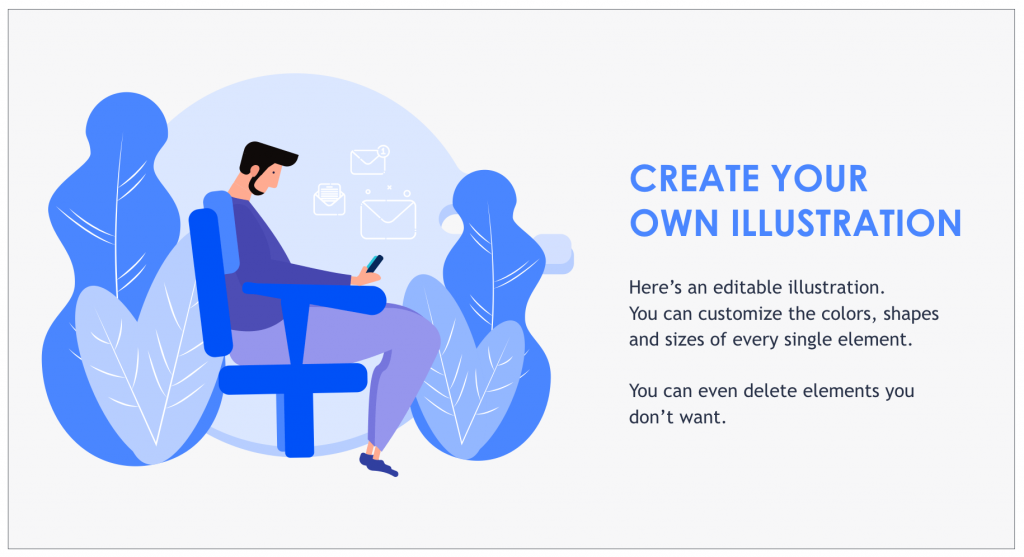
Massive X’s illustrations are made out of multiple, individual elements that are then put together.
And you can edit the color, size and shape of every single one.

These are the exact graphics I’ve used to illustrate the different sections of this guide.
Use them to jazz up your sales deck slides and get your point across more effectively.
Key Features
- 290 unique PowerPoint slides
- Animated slides
- 12,000 icons
- 15 color variations
In this chapter, I’ll break down in small chunks the 7 components of successful sales decks.
This section includes concrete steps, practical strategies, techniques, scripts and examples to help you prepare and structure your sales decks for maximum impact.
Click a section below to be taken to one of the strategies:
1. A stellar cover slide
2. Your value proposition [what do you do]
3. A powerful story [who are you and what makes you special]
4. Identify customer problems [do you understand me]
5. Provide them solutions [what do you offer that solves my problems]
6. Proofs [how do I believe you?]
7. Call-to-action [What happens next]

Think of your cover slide as the packaging of a product.
Why?
The title slide is the first thing your prospects will see. If it sucks, you’re sending a bad signal before having even started to talk. But, wait, don’t take my word for it:
Studies suggested that the packaging design elements have an influence on choosing, getting attracted, like, purchase the product and considering packaging as a brand promotion vehicle.
Cover Slide Examples
Action Steps
👉 Pick Your Background Visual
To pick the perfect picture, answer this 2-step question:
First, what product/service do my company offer?
Then, what tangible element can I associate my offering to?
Here are a few examples:
SEO services -> computer (or web traffic, web page, macbook)
Furniture design -> sofa (or armchair, cabinet, chair, home design)
Management consulting -> office building (or business people, meeting, investors)
Now, head over to Pexels or another awesome free stock photo website. Select a few pictures that closely relate to the identified keyword. If you can’t chose between your options, ask 2-3 colleagues which one they prefer, and go for the most popular option. Done.
👉 Embed Your Headline
You want to make it crystal clear for your prospect what your sales deck is all about. There is not one right way to write that headline, but to simplify the process for you, I recommend using the following structure:
[ Helping + Specific Target Audience + Outcome ]
For instance:
Helping Plastic Surgeons Get More Patients With SEO.
Helping F&B Businesses Getting More Customers With Social Media.
Amazing Events People Will Remember !
Real-world business taglines:
Video solutions for every type of business. Wista.
Get, keep and grow more customers. Kissmetrics.
⚡Bottom line: Great cover slides make it crystal clear what it’s all about. It’s a no brainer.
So… what is your company doing?
A value proposition defines the kind of value you will create for your customers (source). It’s basically the primary reason a prospect should buy from you. In a nutshell, your value proposition is a clear statement that:
- Explains how your product solves customers’ problems or improves their situation
- Delivers specific benefits (quantified value),
- Tells the ideal customer why they should buy from you and not from the competition (unique differentiation)”.
On websites, here’s how solid value propositions look like:
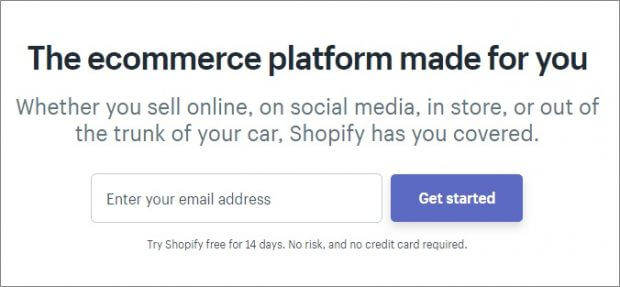
Shopify
On pitch decks:
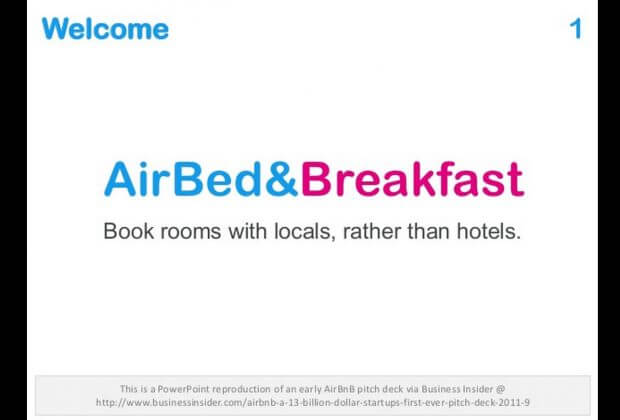
Action Steps
1) Identify Who Your Business is Targeting
First, check out # 2 tip of that article to learn how to do just that. Then, list the exact benefits and results your products/services provide to customers (Check out # 5 tip of this post)
2) Put Everything Together Using the “VP” Formula
[Product type] helps [target customers] to [result]
[Company] helps [target customers] with [service] so you can [result]
[Result they want] + [objections] + [timeframe]
For instance:
Get six pack abs in 3 months, even if you’ve never worked out before.
Flood your inbox with job offers, even if you have zero network.
Build landing pages fast, get more conversions. Unbounce.
3) Include a Slide That Clearly States Your Value Proposition
Stories create “sticky” memories by attaching emotions to things that happen. As a result, effective stories capture and hold our attention. They also help us learn and connect us with strangers.
To craft a good story, for talking about your company or your products, you need three basic elements:
🤬Conflict. Conflict is basically our expectation vs. the cold reality. The conflict is here to let your audience know why they should care about the characters in your story. In the case of a sales presentation, characters could be clients you’ve worked with, and the conflict could be between what your clients couldn’t do before using your product… and what they can do now.
🕺Climax. In order to present a good narrative, you should develop the problem and the characters who are bound up in it. What are your target customers struggling with? You must understand their exact hopes and pains.
😘Resolution. The character solves the main problem/conflict or someone (aka you, the company) solves it for him or her.
Technique #1: Use These Frames To Sell Stories
Problem: current situation faced by your audience. Do you suffer from/Sick of being…
Relief: how it can change. It doesn’t have to be that way/there’s a solution…
Dream: your solution. Imagine if you could…how your life would be if you could…
Protagonist: climate change / tiny farmers providing food to restaurants
Conflict: how climate change affects the growing season”
Resolution: policies that should be in place + how people in other areas are mitigating the effects of climate change on local resources. Source.
If you take a close look at Airbnb’s first pitch deck , there’s clearly a conflict between what the market is offering (standard hotels that leave you disconnected from the local culture) and what people are willing to do (book a room through a local host, become one, find cheaper, authentic accommodations).
The “cold reality” (what the market was offering BEFORE Airbnb came in):
The “expectations” (what happens AFTER Airbnb arrives in the market):
Technique #2: Apply The IBC Framework
Introduction: what is it all about and why should your audience care
Body: it distills your message and supportive points
Conclusion: focus on the outcomes of the presentation, include a specific call-to-action
Let’s take a look at an example of a deck pitching SaaS project management services:
Introduction: the problem behind getting all teams on the same page today
Body: how ABC company project management solutions will help you solve that problem
Conclusion: different options on the market, why our works best, how can we start working together
Technique #3: Use the Liking Principle
According to psychology professor Robert Cialdini, we prefer to say yes to those we know and like.
It’s the liking principle:
We like those who are similar to us, give us complements, and cooperate with us toward common goals. So how do you apply that when it comes to talking about YOU….
Well, you need to get personal. And of course, help your customers feel connected to you.
To do that, appear vulnerable. Emphasize on the stories of your team members. Talk about what they like, what they don’t. You can even mention their hobbies or favorite foods for instance (yes, really) in order to appear human.
Recommended reading:
- Health, Chip and Dan. 2010. Made to Stick. A solid book that teaches you how to better communicate ideas, on the basic of the S.U.C.C.E.S. framework: in order to make an idea sticky, it has to be simple, unexpected, concrete, credible, emotional, and tell a story.
- Freytag’s pyramid. German novelist saw common patterns in the plots of stories and novels and developed a diagram to analyze them. See this quick example of Freytag’s principles applied to the movie TAKEN.
- Joe Gebbia – Airbnb Story (Video)
- University of Berkeley. Robert Cialdini’s Principles of Persuasion.
Action Steps
List What Makes Your Company & Co-Workers Special (and Worth to Work With)
How do I like to present my company to people who don’t know us?
What do our paying customers love about us? (service, team, process, turnaround, product…and why exactly?)
✅ Why do you want to help your target customers?
✅ How did you get involved in this industry/project?
✅ How did you come up with your product/service?
✅ What problem are you trying to solve?
✅ What questions do customers get to ask you all the time?
✅ Why are you passionate about your work?
Don’t kick off your pitch talking about anything that’s related to yourself. Instead, start with giving context.
Technique #1: Show Them What They Can be
Your products and services are nothing more than a tool that enables your prospects to achieve their dreams. So here’s the thing: your goal here is to HELP them visualize what it would feel like if he could fulfill all his dreams.
For instance, name a trend that’s going on in your prospect’s industry. To quote Andy Raskin…
“When you highlight a shift in the world, you get prospects to open up about how that shift affects them, how it scares them, and where they see opportunities. Most importantly, you grab their attention”.
Here are two real-world examples:
Technique #2: Hit Them Where it Hurts, Highlight The Problem
95% of our purchase decision making takes place in the subconscious mind. If you want to have emotional resonance with your prospect, you must show him you understand with pains and problems.
If you recall Airbnb’s first pitch deck example, you understand that the start up had deeply identified the pain points of its market before offering solutions that made sense.
Action Steps
To Identify the Pain Points of Your Clients, Answer the Following Questions:
✅ What are their pain points? What do they struggle with? (i.e. flat sales, low online visibility, etc).
✅ What are your customer’s top 3 priorities and how do they measure success? (i.e. increase sales by x%…)
✅ How does the “Promised land” looks like for them?
To find out trends or key figures related to your prospect’s industry, use these search strings on Google:
“Industry” + report + inurl:[name of a famous consulting company] (Bain, BCG, McKinsey)
Example: “Retail industry” + report + inurl:accenture
Now, you’re going to demonstrate how your solution will help the prospect get rid of his problems and fulfill his dreams. Your single focus here will be to give out information that benefits to them.
You see, customers buy because they want benefits (and the results that come with them). For that reason, they don’t give a crap about your features unless it helps them understand how it gets them results they care about.
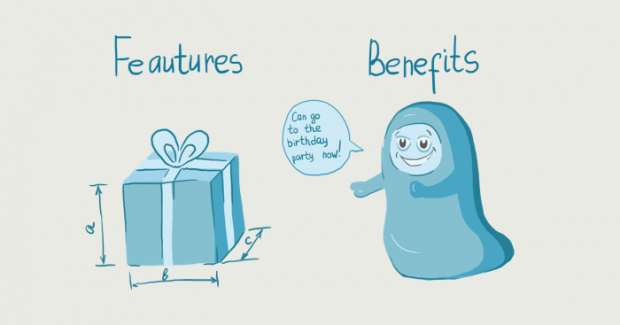
I’ll give you a few examples:
Features = Things (that Porsche 911 GT2 RS)
Benefits = Results that come from doing these things (get girls)
Features = A 20-slide persuasive sales presentation
Benefits = Impress prospects, get your message across, close more sales
Features = a detailed web analytics audit and health checkup
Benefits = we help you identify where your website is leaking money, create optimized treatments and run optimization tests in order to help you increase your revenue.
Here’s how you should approach this when crafting your presentation:
[Company] helps you with [product name, feature, deliverable] so you can [benefit].
See how Facebook is tying a product’s feature with core benefits their clients care about:
Feature: target reach
Benefit: reach all the people who matter to you
Action Steps
1) List the Exact Features of Your Product/Service (= What it Does)
A 20-slide persuasive deck
A 16-week one-on-one coaching program
A 3-month SEO package
2) List the Tangible Benefits Your Customers Get From Using Your Product/Service
For instance, you could help them…
✅ Look sexier –> fashion, muscle building
✅ Become richer –>wealth consultants
✅ More popular –> weight loss programs
✅ Be the first –> SEO services
✅ Make their life comfortable –> interior design
✅ Have more freedom –> project software
✅ Save money –> insurance company
etc…
3) Connect 1 + 2 Using Linking Words (So You Can / Will Help You / Will Give You)
Let’s take a look at a concrete example below.
1) Features. Do-it-at-home bodyweight exercises
2) Benefits. Build muscle to speed up weight loss without spending money on a gym
3) Linking it. We provide you 12 step-by-step videos that will show you do-it-at-home bodyweight exercises [ so you can ] build muscle without spending money on an expensive gym membership.
Of course, every sales rep under the sun says their company offers amazing products.
But for most prospects, you’re just another sleazy sales dude trying to push products or services that won’t provide any value to them.
Your goal as a presenter is to help them overcome their objections: your sales deck must demonstrate that you are able to get your customers the results you claim.
The best way to do it?
Educate your customers (instead of “selling” them).
In other words, convey information that benefits to them.
Here are four practical ways to do it:
Incorporate Expert, Research-Backed Data
Here are pieces of evidence (aka facts, not opinions) you can include in your sales deck:
✅ Expert quotes: what your industry key influencers have to say about <your industry>, <trends>, <products>, <you>.
✅ Research data: check out .edu websites, magazines and research journals that release data, insights angled toward the market you are serving. Use the following search strings on Google: site: .edu + <keyword> or intitle: research journal + <keyword>.
✅ Competitor analysis: in which specific aspect of your business are you better than your competition?
Process, service, quality, price, support, results? Find data that makes your product/service better than your competitor. You could make a table listing yours vs. your competitor’s key features and benefits in order to show how you are better than them.
Show Case Studies (Before & After)
Case studies are a unique angle you can use to educate your prospects and show them what they can be, thanks to your product/service.
Look, case studies are everywhere:
Here, another example extracted from the deck Facebook For Business: Video On Facebook
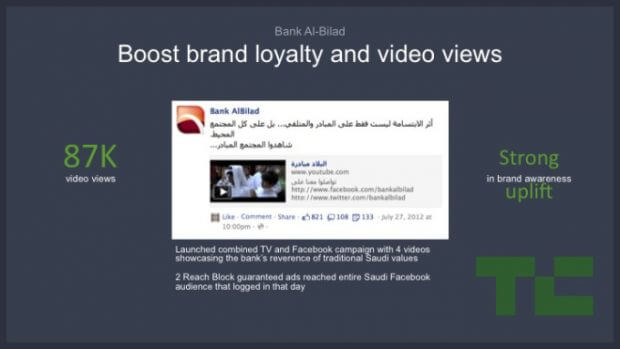
Check out Facebook’s note below:
“OBJECTIVE:
Wanted to boost brand loyalty and drive viewership of its Ramadan Holiday video
STRATEGY:
Launched a combined TV and FB campaign
4 videos showcasing banks reverence of traditional Saudi values
Two Reach Blocks guaranteed that the ads reached the entire Saudi Facebook audience that logged in that day.
RESULTS:
Strong uplift in brand awareness generated by Facebook campaign as found through Bank Albilad’s own internal study.
“Facebook increased our brand loyalty given the valued interaction between our audience and us. This platform, Facebook, was one of the main channels for such a campaign and it will remain a crucial platform for future campaigns.”
Mohammed R. Abaalkheil, Head of Marcom Division, Bank Albilad”.
Specifically Address Their Objections
There are 5 major categories of objections: need / price / product / source / time.
Consequently, your job is to address the typical fears that are driving it. To succeed doing that, you have to provide concrete answers these questions:
He doesn’t get me
It worked for others but won’t work for me
How can I be a 100% sure this works
I don’t like/trust/believe him
We can find the same thing for free/cheaper elsewhere
I can buy later
It’s too expensive
What happens after I accept their offer
Ask For Customer Testimonials (The Right Way)
According to Nielsen, testimonials & word of mouth are the driving force behind 20 to 50% of all purchasing decisions.
In order to get awesome customer testimonials, you need to ask the right questions. Here’s a solid set of questions you should ask every client:
What hesitations did you have about working with me?
Which changes have you noticed since working with me?
What specifically did you like the best about working together?
How have you benefited from hiring our company?
Would you recommend my company o a colleague or a friend? If so, why?
Action Steps
⚡Bottom line: educate your customers, don’t sell them.
Get them to say “Wow! I didn’t know that”.
Incorporable rock-solid customer testimonials, research-backed data in order to teach them something they may not have known. That’ll get them to believe it for themselves, and create trust.
A call to action is a simple command that directs customers to take some sort of action (buy, sign up, or start a free trial). Here are a few specific examples:

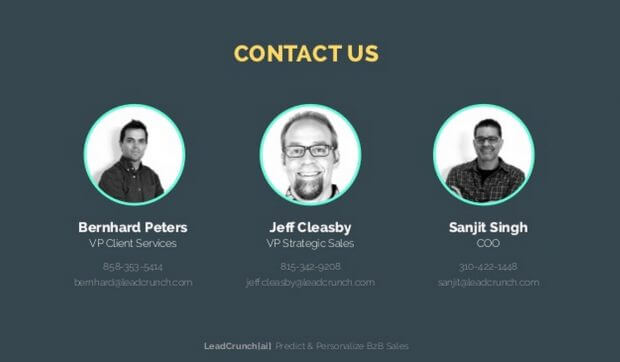
Action Steps
Be Laser-Focused On Your Audience
You can’t reasonably want to “close a $150,000 deal in the meeting room today if it’s the first time you’re discussing with the prospect.
In other words, make sure you call-to-action is aligned with the situation. If it’s the first time you’re meeting the prospect, you could target to agree to set up the date for the 2nd meeting. If you’re negotiating a contract, you could get the prospect to agree getting back to you with their feedback within 2 weeks.
Here are the most common questions business people ask themselves when it comes to making better sales presentations.
⚡ What Are the Objectives of a Sales Presentation?
Let me flip that question…
What is your (realistic) goal for this sales presentation?
You can either be looking to inform, educate or persuade your prospects and clients. And the answer will depend on the level of relationship you’ve established with them (If it’s the first time you meet, “closing the sale” might not be the appropriate answer).
Here are a few examples of objectives you could come up with (the more specific, the better):
I’m doing this sales pitch to…
Understand X, Y and Z aspects of the prospect’s business in order to draft a proposal that’s relevant to his expectations.
Introduce a new growth opportunity we’ve identified for [company] and get their feedback on it.
Build a relationship with a new prospect (so two years from now he wants to purchase from us).
⚡ How Should I Prepare My Pitch Presentation?
There’s nothing more frustrating for a potential customer than having a meeting with a sleazy dude who has no clue about who he’s dealing with.
Let’s face it:
Prospects want to know whether you can help them get more of what they want.
Do research on those 5 aspects:
Who are your target customers, specifically?
What are their hopes, fears and dreams?
How much do they know about the solution what you’re trying to sell them?
Is their market share growing, steady or declining?
Which channels do they use to use to reach, acquire and retain their customers?
Plus, here are important question marks you should be able to answer:
| 1) Know What You are Selling | What does your company sell exactly? What’s your value proposition (what is it about you that is different from the crowd?) How does your product/service benefit your target customer? |
| 2) Know Your Competition | Who are your top 3 competitors? What are their strengths and weaknesses? Have you learnt from their operations/marketings? What makes you different – and better – than them? |
| 3) Know the Customer | |
| 4) Know the Market | What is the size and growth of your market? (growing, steady, declining?) Do you know the booming trends in your industry? What opportunity gaps have you identified for your prospects? |
⚡ What is the Best Slide Deck Structure?
The basic structure of any sales presentation includes 4 key points: 1) the problem faced by your prospect 2) the dream solution (the results they’re after), 3) how your company helps them get what they want (the benefits and results you offer) and 4) reasons why the prospect should chose you over your competitors.
⚡ How Can I Improve My Sales Presentation Design?
If you’re starting from sub-zero (or want to educate yourself better than 80% of the people out there), check out this post. It breaks down 100+ simple, practical presentation tips to help you plan, design and deliver unforgettable presentations.
If you’re looking for practical design tips, head over to this guide where I list 21 simple slide design tips to help you make better decks fast.
Want to craft a more creative deck? Check out this post. It includes actionable techniques to help you design creative presentations within minutes (with free templates, lessons and resources).
⚡ Where Can I Grab Business Images For My Presentation?
Right here (free)
⚡ How Should I Open/Start My Presentation?
Most audiences will give you only 30-60 seconds to convince them they want to listen to you.
As a result, your introduction is the most important part of your presentation because it will directly affect whether they want to hear more about what you have to say (or not). To that end, your presentation opening needs to accomplish four things:
1. Get the audience interested in the presentation
2. Build rapport
3. Establish credibility
4. Tell the audience what the presentation is going to provide them
Use the GTS (give them something) formula to get your audience’s excited about what they’ll be able to do or know by the end of your pitch:
Today, I’m going to show you [ statement that benefits your audience ].
By the end of this presentation, you will [ result they’re interested in ].
For instance:
Today, I’m going to show you how you can use conversion optimization to triple your sales in less than 6 months.
⚡ What Questions Should I Ask the Prospect?
Here’s a set of questions you should ask prospects (the questions work great with first time prospects):
Can you help you understand how you measure success in regards with [topic]?
What do you want to achieve, specifically? This year? Mid-term, long-term?)
Tell us about your business in one sentence?
What makes you different?
What are your client’s biggest problems and aspirations? (Visualize what matters to them)
What delights your customers about your product?
Does our offering make sense for your world?
Could you see this applying to you?
Can we agree on [proposed next steps after the meeting]?
⚡ How to End/Close a Sales Deck?
The closing should amplify the message, wrap up the key takeaways of your presentation, and include a call to action.
If you’re sending the file through email, include a slide with a call-to-action enticing them to contact you, and give them your contact info.
If you’re having a meeting, summarize orally your understanding of customer’s goals and needs, and how you can help them achieve those goals. Also make sure to propose, and agree on the next steps. For instance:
“Would that work with you if we send you a recap of this meeting, the additional elements we talked about, and follow up within a week of time?”
⚡ How Long Should My Presentation Last?
After having conducted an experiment, Dr. Maureen Murphy at the University of North Texas (UNT) said that:
“If a presentation that had 20 minute segments with short breaks in between, the people enjoyed the 20-minute chunked presentations more than a 60 minute presentation, learned more information immediately after, and retained more information a month later”.
She concluded:
“See if you can build in some kind of change every 20 minutes. For maximum learning you want a break every 20 minutes, as opposed to just a change of topic….Instead of taking one long break, take several short ones”.
Here’s my take on this study:
Break down your sales meeting in 20-minute chunks. For instance:
Chunk 1) Understand your prospect’s business. Ask him questions. Get insights.
Chunk 2) Introduce your product/service offerings. Which is long enough for your prospects to understand clearly how your product/service can help them.
⚡ Can You Show Me Some Solid Sales Presentation Examples?
Check out this post where you’ll get 20+ real-world sales deck examples.
⚡ How Can I Improve My Current Sales Deck?
First, incorporate the 7 components I’ve broken down in this guide, pin point your customer’s burning desires, offer deliverables that allow them to get the results they want, and you’ll be set to deliver a great sales deck that will help you generate more business.
Then, equip yourself a professional, ready-to-use presentation template that’ll help you put together a great sales deck fast (and at the fraction of what a designer would cost you).
See, you’re smart enough to know you could spend that time on more strategic, higher level activities that actually move the needle (like tweaking your value proposition, challenging your business strategy or fine tuning your pitch).
And the truth is, you don’t have to spend a huge amount of time on designing, editing and arranging those slides for your high-stake, upcoming sales presentation:
Most templates include everything you need, from gorgeous, easy-to-edit slides and icons to charts and ready-made color themes.
For instance, I’ve used the fully editable graphics of Massive X, one of my favorite templates, to illustrate this presentation guide.
The Massive X PowerPoint Template
With countless design options, practical slides and a recent bundle update, Massive X toke the business of presentation templates to a whole new level of professionalism and creativity.
Here’s a quick intro video of their latest bundle:
Now, what I love about this bundle (beyond the hundreds of beautiful, professional slides they’re offering) is their 100% editable illustrations:

Massive X’s illustrations are made out of multiple, individual elements that are then put together.
And you can edit the color, size and shape of every single one.

And the great news is, Massive X comes with a ton of editable illustrations you can use for multiple purposes:
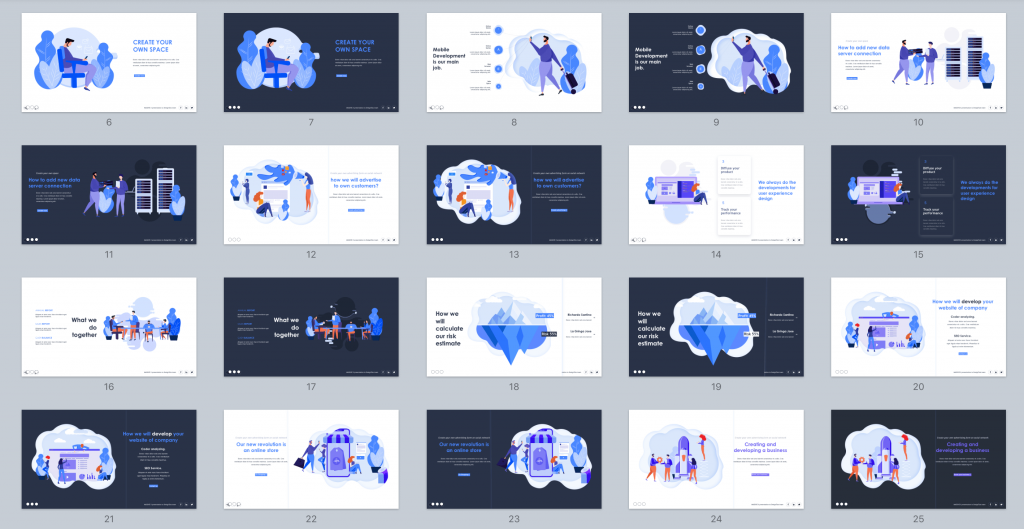
Use them to illustrate your sales presentation slides and get your point across more effectively.
Now, let’s take a look into the details of the bundle…
😍 Key Features
- 290 unique PowerPoint slides
- Animated slides
- 12,000 icons
- 15 color variations
Not sure about what templates can do for you?
No worries, maybe you’d like to see my detailed review of the best presentation templates available on the market below.


